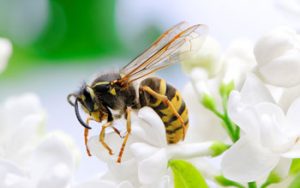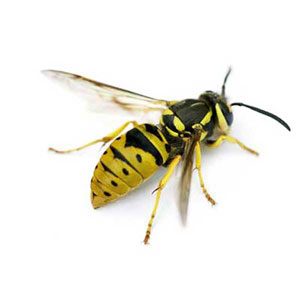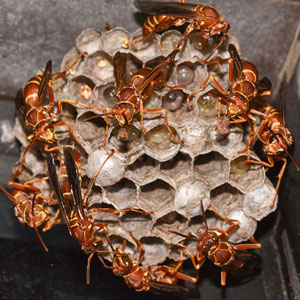 Have you ever noticed that yellow jackets in the Las Vegas area are more aggressive during the fall? You’re not wrong! As summer comes to a close, these wasps notoriously become more hostile as they leave their nests and seek out resources to survive the winter. This is when they typically will invade outdoor barbecues and picnics in the fall. Because yellow jackets can sting more than once, it’s important to know how to protect you and your family from their aggressive behavior throughout the autumn months.
Have you ever noticed that yellow jackets in the Las Vegas area are more aggressive during the fall? You’re not wrong! As summer comes to a close, these wasps notoriously become more hostile as they leave their nests and seek out resources to survive the winter. This is when they typically will invade outdoor barbecues and picnics in the fall. Because yellow jackets can sting more than once, it’s important to know how to protect you and your family from their aggressive behavior throughout the autumn months.
Yellow Jacket Life Cycle
During the spring months, a queen yellow jacket will begin to build a nest before laying her eggs. Once the eggs begin to hatch in the springtime, the wasp population can grow exponentially throughout the summer—colonies have been known to contain up to 5,000 members. When summer winds down, many yellow jackets leave the colony to mate, or are forced out due to limiting resources. This is often when these stinging insects are at their most aggressive as they fight to survive, which is when they frequent more residential areas.
Preventing Wasps in the Fall
Bees and wasps are a normal part of daily life and are valued in our environment. That said, they can also be dangerous, especially in the fall and even more so if someone in your family is allergic to their sting! For that reason, it’s important to know how to keep them away from your outdoor events throughout the fall. Some of the ways you can keep yellow jackets away include:
- Cover all food and garbage with tight-fitting lids.
- Don’t wear bright colors or wear fragrant perfumes.
- Inspect your property for signs of nests in eaves or holes.
- Never walk barefoot through grassy areas.
- Get rid of sources of standing water and place covers on pools.
Professional Yellow Jacket Nest Removal
Because yellow jackets are so aggressive in the fall, it can be hard to stop them from invading your outdoor events. Especially when nests are involved, it’s best to contact a professional with experience controlling yellow jackets and safely removing nests. The team at Rentokil can not only control any current problems you’re having, but also help protect you and your family from future yellow jacket invasions.

 Everyone learns at a young age that yellow jackets are not to be trifled with. Unfortunately, everyone comes in contact with them at some point or another, especially during the spring and summer in the Las Vegas area. Unlike other small stinging insects, yellow jackets have the ability to sting repeatedly, making their venom especially dangerous to those allergic to the flying insect.
Everyone learns at a young age that yellow jackets are not to be trifled with. Unfortunately, everyone comes in contact with them at some point or another, especially during the spring and summer in the Las Vegas area. Unlike other small stinging insects, yellow jackets have the ability to sting repeatedly, making their venom especially dangerous to those allergic to the flying insect. The last thing you expect in the dead of winter is to witness wasps in or around your home. If they are seen, they are most likely paper wasps and are probably the future queens of a new colony. During the early fall, paper wasps begin to die off. Some of the females, however, remain alive in order to seek out new places to nest in a few month’s time. If you notice one of these wasps in your Las Vegas home during the winter season, it’s important to understand why it’s there and what you should do about it.
The last thing you expect in the dead of winter is to witness wasps in or around your home. If they are seen, they are most likely paper wasps and are probably the future queens of a new colony. During the early fall, paper wasps begin to die off. Some of the females, however, remain alive in order to seek out new places to nest in a few month’s time. If you notice one of these wasps in your Las Vegas home during the winter season, it’s important to understand why it’s there and what you should do about it.